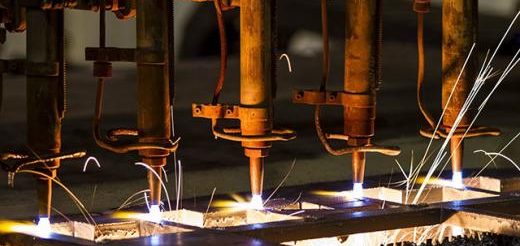2021 Manufacturing Innovation: Where We Are | Quality Digest

Much like many industries, the manufacturing sector has been completely upended by the Covid-19 pandemic. However, unlike many sectors, manufacturing was already in the midst of a consistent cycle of up and downs by the time the Covid-19 pandemic struck.
From sourcing challenges to fighting off more agile insurgents such as Amazon, the need for traditional manufacturing businesses to find innovation success has never been more important. Moreover, given how dire the need for innovation is, manufacturing has emerged as one of the most interesting spaces to watch in the world of business today.
With all that said, as part of our 2021 Innovation R&D and Innovation Agenda study, which polled 300 senior innovation decision makers at companies with annual revenues of at least $1 billion, including 60 within the manufacturing and durable goods categories, we were able to uncover several key findings and trends that are shaping the world of innovation in these categories.
Here are some of the most intriguing results.
Pandemic drives innovation investment
With the Covid-19 pandemic forcing change on every business sector, businesses around the world, including in manufacturing and durable goods, have had to work harder to keep up with market evolutions. And this is likely to continue into the post-pandemic period. In fact, per the study’s findings, 60 percent of respondents said that they planned to see their innovation budgets jump in the wake of the pandemic—with many believing they will likely see a notable bump. However, while this is good news, manufacturing businesses need to make sure they fix any holes in their innovation ops if they want to get full value from their investments.
Disconnect exists between frontline and C-suite
Clear and defined direction and buy-in from the top is a key driver among successful innovation programs. Unfortunately, at most organizations, there is a distinct disconnect between on-the-ground innovation workers and top leadership about the role executives play in driving innovation success. Only 6 percent of C-suite leaders believe that a lack of C-suite engagement in innovation is a “very significant” impediment to innovation ops success, vs. a third of VPs and senior innovators at every other level, from manager to VP. This must be rectified if organizations are going to build the comprehensive innovation ops strategies that are needed today.
Confusion and a lack of collaboration undermine success
Contributing to the confusion over executive buy-in and engagement are concerning trends that exist on the frontlines of innovation ops as well. Although a vast majority of respondents said that they buy into their organization’s stated innovation strategy and goals, the alignment does not always extend to day-to-day execution. This is especially true when it comes to collaboration between teams. According to the research’s findings, nearly two-thirds of respondents said that a lack of internal coordination between innovation groups was either a “very significant” or “somewhat significant” impediment to innovation success—making it the No. 1 obstacle according to respondents in this year’s study. Strategies mean nothing if teams are unable to pull in the same direction. Therefore, organizations must institute defined frameworks, metrics, and reporting to ensure that everyone is on the same page and working toward unified end goals.
Getting innovation right is no easy task. Unfortunately, given the longstanding periods of fluctuation in the manufacturing and durable goods industry, it is hugely important that companies shore up their innovation ops capabilities—and quickly. By keeping some of these trends and pitfalls in mind, manufacturing and durable goods businesses stand a much better chance of achieving tangible innovation success.
Quality Digest does not charge readers for its content. We believe that industry news is important for you to do your job, and Quality Digest supports businesses of all types.
However, someone has to pay for this content. And that’s where advertising comes in. Most people consider ads a nuisance, but they do serve a useful function besides allowing media companies to stay afloat. They keep you aware of new products and services relevant to your industry. All ads in Quality Digest apply directly to products and services that most of our readers need. You won’t see automobile or health supplement ads.
Our PROMISE: Quality Digest only displays static ads that never overlay or cover up content. They never get in your way. They are there for you to read, or not.
So please consider turning off your ad blocker for our site.
